As the U.S. and world continue with COVID-19 vaccination distribution, we took a look at the conversation around vaccines on Twitter and its connection to other trends we are seeing in public polling and vaccination rates. Our team analyzed a pool of over 18 million posts from 4 million authors over the past year. Through this analysis, we were able to uncover evolving narratives, turning points within the conversations, and real-world effects of social media campaigns.
Broader COVID-19 Vaccine Conversation
Encouraging trial results from Pfizer on Nov. 9 marked a turning point in the volume and tone of vaccine conversation.
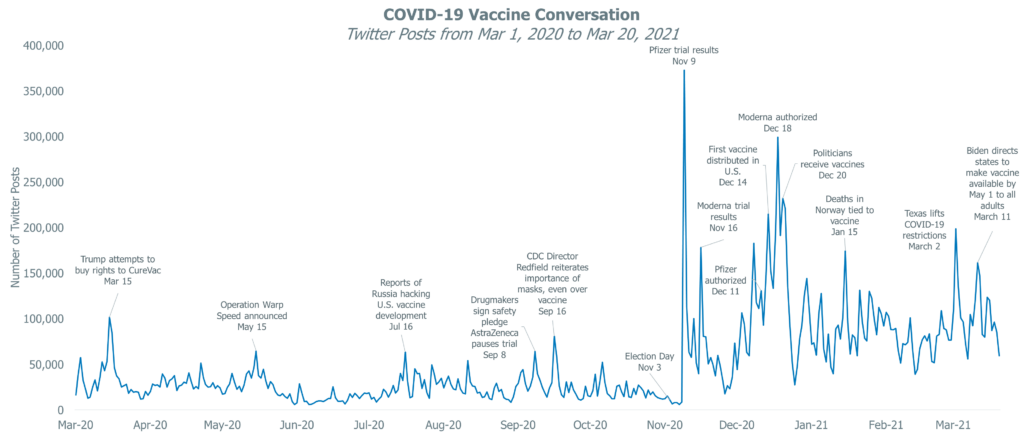
We saw a significant increase in the volume of conversation following the release of initial trial results from Pfizer on November 9. Volume reached a new baseline as the vaccine became a reality and attention turned from following development to following distribution. Conversation from beltway insiders on both sides of the aisle also increased significantly following the Pfizer authorization, with Democrats taking a leading role in using social media to advocate for the safety of vaccination. Republicans posted less frequently and were more hesitant to share recommendations.
Misinformation and conspiracy theories fueling vaccination hesitancy are decreasing as vaccine distribution increases.
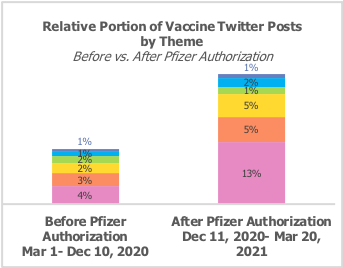
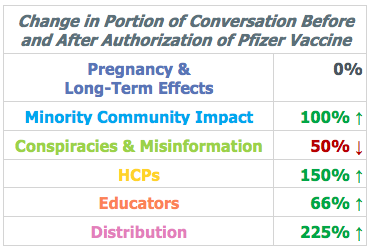
As attention closely followed developments in the vaccine rollout around the world, many conversations continued to react to news around potential shortcomings and adverse effects of a young vaccine. Distribution became the key priority as President Biden transitioned into power, with discussion focusing on prioritization of different populations and scrutiny on the accessibility of the vaccine. Educators gained a significant fraction of the conversation as parents anxiously awaited schools to re-open and the risks and benefits were weighed by teachers and administrators. Within this conversation, narratives of misinformation around microchips, and religious theories of the “mark of the beast” lost momentum.
Minority Community Impact
Conversation around minority communities has made significant progress, shifting from hesitation and distrust to organizing vaccination efforts and shaming “line jumpers.”

Conversation around the impact to minority communities also increased significantly following the authorization of the first vaccine. Narratives around hesitancy from minorities began early in the pandemic as minority communities, especially Black Americans, were being disproportionately affected by COVID-19. When vaccine development became reality, skepticism over representation and past discrimination in the medical community gained attention, with some citing the Tuskegee study and Henrietta Lacks specifically.
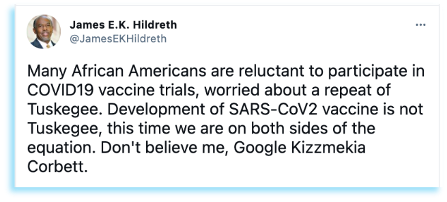
A prolonged period of hesitance and low trust from August to early winter transitioned into news around trust building campaigns spearheaded by community leaders. Momentum continued to build as Kizzmekia Corbett’s involvement in the development of the Moderna vaccine was touted by Dr. Anthony Fauci and other trusted voices.
Most recent conversation has shifted away from willingness to responding to disparities in vaccination distribution and scrutiny over accessibility and “line jumpers” showing up to minority communities. This shift from skepticism to action seen in social media narratives aligns strongly with significant improvements in public polling data showing strong support within Black communities.

Peer to peer communication and efforts from community leaders will remain critical in maintaining momentum in increasing vaccine willingness.
While we saw evidence of prominent community leaders gaining traction on social media through efforts such as the “Voices from the Barbershop Covid Vaccine Edition,” and Pastor R.B. Holmes spearheading efforts in Florida, the importance of peer-to-peer communication and trust in community has been underscored by public opinion data.
A study done by the COVID Collaborative found that trust in the safety of the vaccine and subjective norms were the leading predictors of vaccine willingness among Black adults. They found that the more an individual believes that most people around them would want them to get the vaccine, the more likely they are to trust the safety of the vaccine. Black Americans were also twice as likely to trust a messenger of their own racial/ ethnic group compared to white counterparts.
More specifically, the effect of social media efforts was analyzed in a study partially funded by Facebook. The work done at MIT found early evidence that showing people getting their vaccine in content had a significant effect on those with unsure or negative feelings about the vaccine. We’ve seen a significant increase in posts sharing news of personal vaccination in our own data with encouraging commentary from prominent leaders.
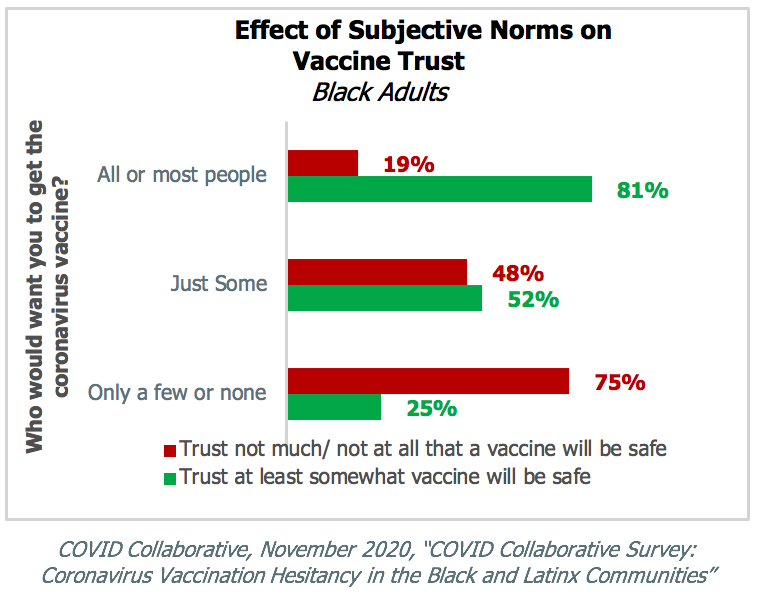
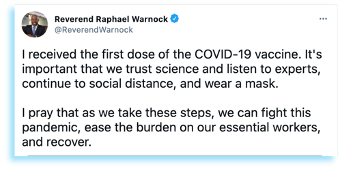
Political Divides
There are strong partisan divides in vaccine willingness, and vaccine advocacy.

We mentioned earlier that Democrats have been more active than Republicans in twitter conversations around the COVID-19 vaccine, but we also found that Democratic voters were more likely to change their mind about the vaccine. Republicans, however, have been less malleable and saw just an 11-point increase in vaccine willingness according to data from Civiqs.
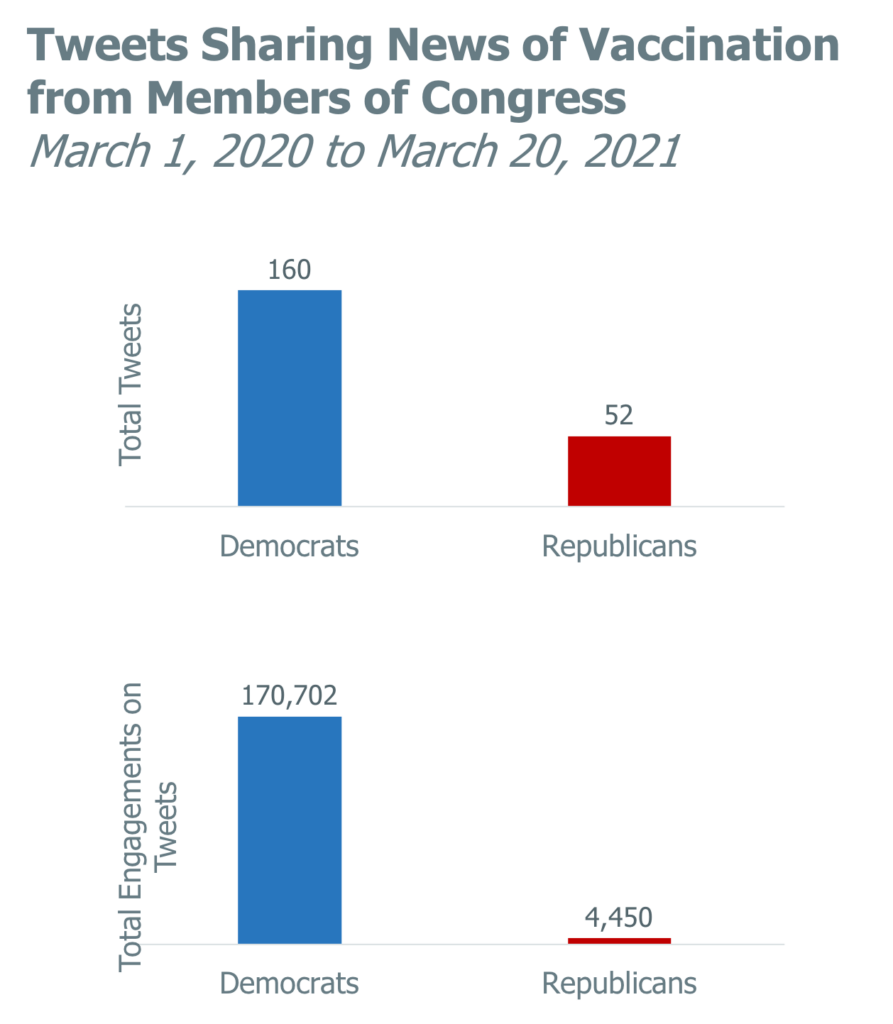
In analyzing Twitter content from Members of Congress, we found that Democrats were more likely to be stronger advocates of vaccination. They not only shared news of their own vaccination more often than Republicans, but also captured significantly more engagement on their posts. The content itself also varied among parties. When Democrats shared news of vaccination they were more likely to immediately encourage vaccination, while Republican members would delay a recommendation to a following tweet. Notably, the majority of members who posted the news began with “at the recommendation of the office of the attending physician”—surely a nod to honoring the prioritization and scheduling of vaccinations.
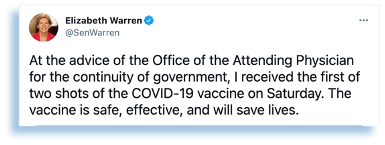
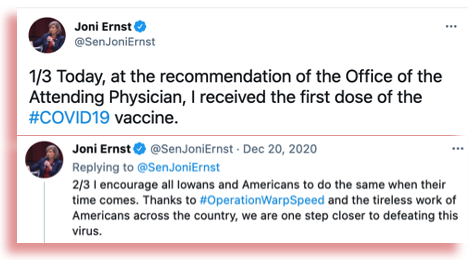
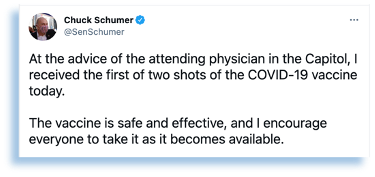
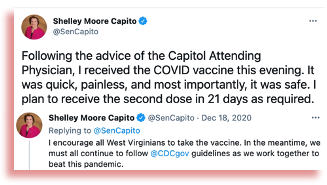
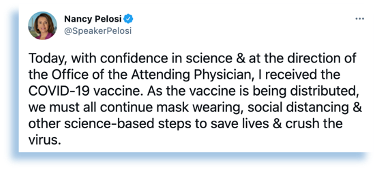
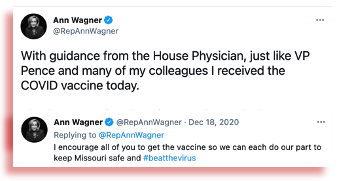
The Next Turning Point
While distribution of the vaccine continues to open to more populations throughout the country, questions of if may turn to when. The authorization of the first vaccine represented a key pivot in conversation, but what will the next one be and how will divides in key populations play into those moments? We’re keeping our eyes on it, but until then click here to see our full report.
If you want to learn more about this report or the work we’ve been doing for our clients in insights, intelligence, and analytics, please feel free to e-mail Caitlin Gallagher directly at cgallagher@forbes-tate.com.
